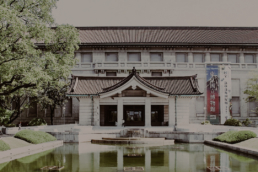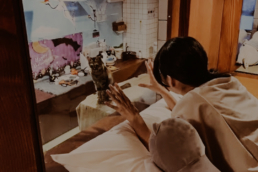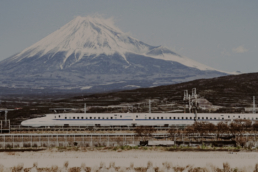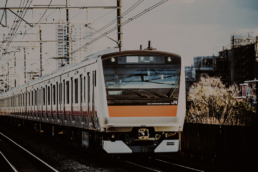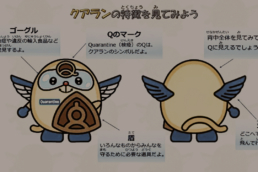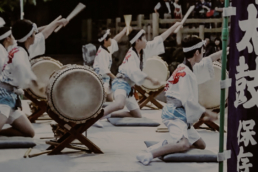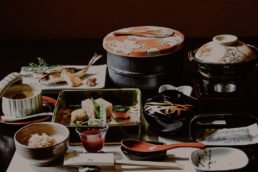Things to do during Quarantine: Traveling to Japan through Movies
Embark on a Journey to Japan through movies
written by: Erika | source: Tokyo Weekender
The long quarantine is almost over but travel is still impossible, so let's continue our section on things to do in quarantine, and today we will explain how to discover Japan through movies.
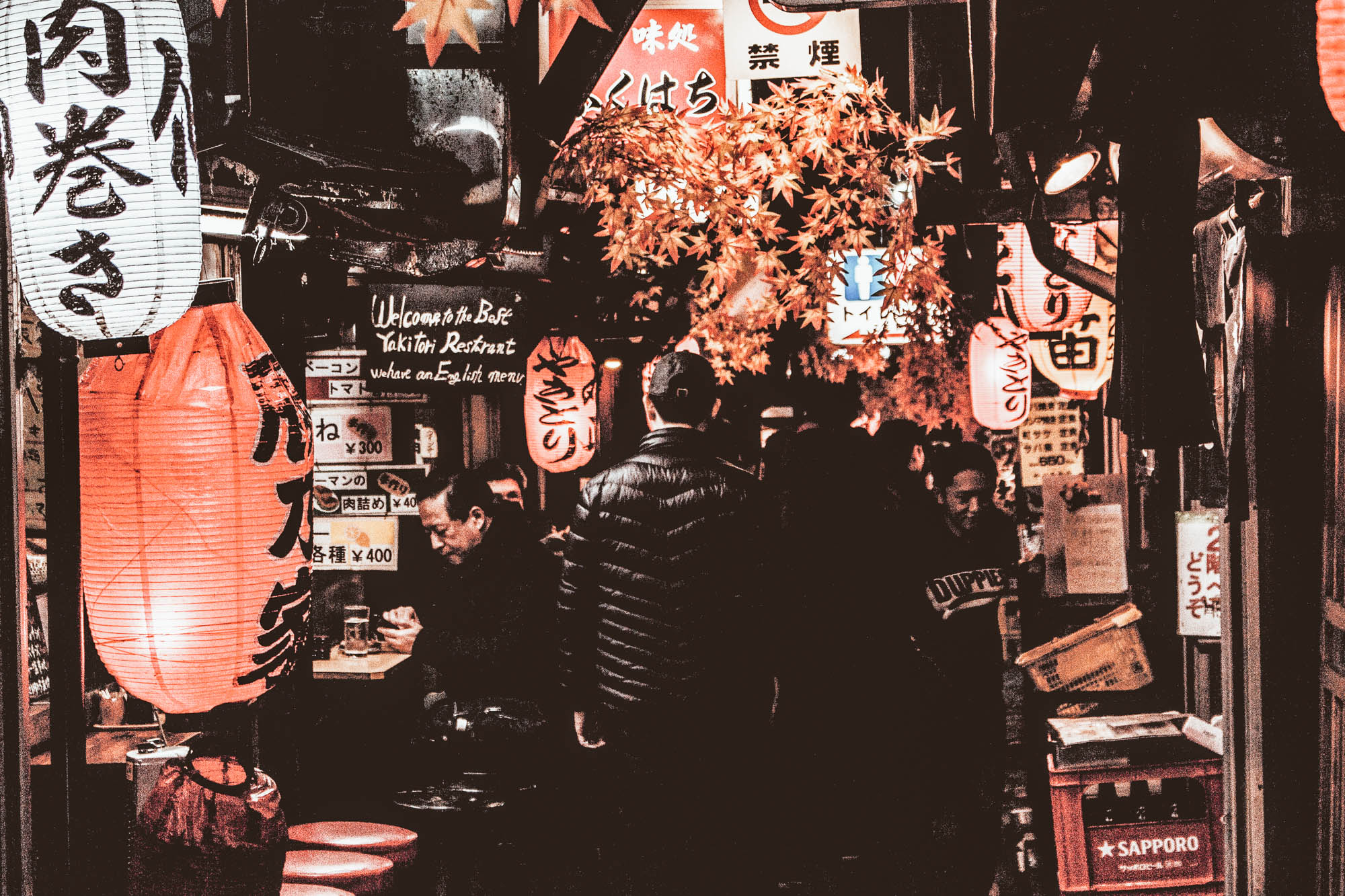
With the coronavirus pandemic, the world's borders closed, airports blocked and flights canceled prevented people from traveling. This not only caused the tourism business to drop but also prevented us from getting to know and explore distant countries such as Japan. Precisely for this reason, today we share with you a simple method to be able to explore the land of the Rising Sun directly from your home. In fact, here are 5 films that will help you experience Japan as we know it today and as it was long ago.
Departures (2008)
An Oscar winner, this beautiful film tells the story of the city of Sakata and its surroundings in the Shonai region of Yamagata prefecture, north of Japan. A work of art from the world of cinema, the film tells of a man who returns to his hometown after a failing career as a cellist. Here, the man begins a new life and a new career as a traditional funeral director. Unhappy with the situation but fighting against the prejudices connected to his new job, the man begins to love his new profession.
Initially regarded as a taboo, Departures then proclaimed the international recognition of director Yojiro Takita. Along with this, the building used for filming has become a very popular film location. However, the film's memorable scenes were shot in the countryside around the Gakko River and the snowy Mount Chokai. This feature is perfect for those who want to know the most rural locations in Japan and the more traditional customs of the rural life of the Rising Sun.
Memoirs of a Geisha (2005)
Famous film and Oscar winner, Memoirs of a Geisha is one of those must-have films related to Japan. From the award-winning director Rob Marshall, this movie has indeed changed the face of Kyoto tourism. Although the film was not entirely shot in this city, the story lets us travel to the Kiyomizu-Dera temple, through the torii of the Fushimi Inari and the Arashiyama bamboo forest.
The film tells the story of the life of a 9-year-old girl whose father sells her to a Geisha house. In fact, we will set off on a journey that will transform this little girl into one of the most sought after geisha of the time. Not only does this film help us discover landscapes and traditions that are now almost lost, but it brought the culture of Geisha to the west for the first time. However, at the same time, Memoirs of a Geisha is also a celebration of Japan's harmony and unique ways of life.
In fact, the traditional tea ceremony, the beauties of the Zen gardens, the classic Buddhist temples, the traditional houses of the Edo period in the historic Gion district are the backdrop to this story. A perfect way to describe magical Kyoto and the experiences that can be faced in the ancient capital of Japan.
Lost in Translation (2003)
The film that launched the careers of Sofia Coppola and Scarlett Johansson, together with Bill Murray, this movie tells the story of a couple of friends who meet in a hotel in Tokyo. Filmed almost entirely in Japan, here we can see the contrast between the nightlife of the city and the colorful and noisy districts of Tokyo, together with the calm of the temples.
Winner of two Academy Awards, the film is a journey into modern Tokyo life. Moving from the neon graphics of the Kabukicho streets in Shinjuku, up to the beautiful images of the famous Shibuya crossing, the Tokyo Tower and the Rainbow Bridge in Odaiba. In addition, the film also shows us the countryside when the protagonist embarks on a journey to Kyoto. In fact, from the shinkansen, we can see the flowing of the Japanese countryside arriving then to the Nanzenji and Heian Temples. Let's not forget the beautiful scene where Murray plays golf in Kawaguchiko with the iconic views of Mount Fuji.
In short, a must-see movie for anyone who wants to find out more about Japan.
Rhapsody in August (1991)
One of the last films of the revolutionary director Akira Kurosawa, this film is set in a small town near Nagasaki. With a compelling but minimalist narrative, the story is about four teenagers who visit their grandmother during the summer. With a backdrop of cicadas, forest adventures, rickety wooden houses, and Buddhist ceremonies, the kids face a perfect holiday in the countryside of Japan.
In a bucolic portrait of Japanese country life, the four teenagers spend more time with their grandmother, listening to her stories. Subsequently, in the second half of the film, we will be able to see Nagasaki after the war with the bright colors of youth. In fact, the four young people embark on a journey to see the bombing sites and the school where their grandfather was a teacher when the explosion occurred.
A film that allows us to know the world of Japan after the war, but which at the same time becomes a denunciation of the guilt of the wars themselves. Controversial but at the same time enlightening, Rhapsody in August is a truly unmissable film for anyone who loves cinema and Japan.
Times of Joy and Sorrow (1957)
This time the acclaimed director Keisuke Kinoshita tells us the story of a lighthouse keeper, his wife, and their travels in 10 different lighthouses along the coast of Japan. A relationship and travels that cover 25 years of marriage, through this film we discover Japan through several years starting in 1932.
The famous site of Kannonzaki, the nation's first lighthouse, worked as a set for the opening scenes. In fact, here we now find a statue of the protagonists of the film. Thanks to the amazing work of the director of photography, through this film we have the opportunity to embark on a journey through the various lighthouses of the nation. In fact, in this regard, we see the beautiful scenes of the Hajikizaki lighthouse on the island of Sado, a wonder for our eyes.
Subsequently, the couple's journey takes us to some of the most remote areas of Japan and the adventures and misadventures of the protagonists introduce us to the lighthouse's staff.
An exciting film that accompanies us on a postcard trip of the shores of Japan, between waves and cliffs, absolutely not to be missed.
Things to do during Quarantine: Visit the museums of Japan virtually
Visit every museum in Japan, it's possible but only virtually
written by: Sara | source: Tokyo Weekender
Phase two here in Italy has started but traveling is still impossible, so let's continue our section on things to do in quarantine, and today we talk about how to visit the museums of Japan, virtually.
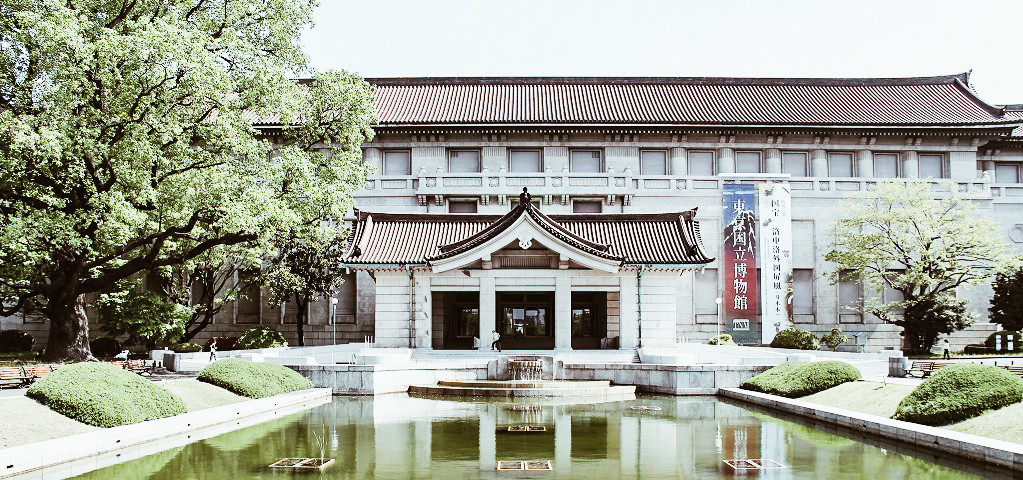
photo credits: https://enjoy.vivi.city/
In an instant, we were overwhelmed by an invisible enemy that has inevitably turned everyone's lives around the world. The spread of the new coronavirus and the pandemic that followed unfortunately led to the closure of many economic sectors, but also places of cultural interest.
The situations are the most varied and we at Japan Italy Bridge want to try not to share sadness, but to give small brackets of leisure to all our readers. In fact, although COVID-19 has deeply affected us all, our mission remains to take you on a journey with us among the wonders of the Rising Sun.
Embracing the slogan #stayathome, the hashtag that has spread in recent months, and thanks to Google Art And Culture and other individual initiatives, Japan has also opened the virtual doors of its wonderful museums and exhibitions, allowing us to visit them comfortably from the living room of our house! The list is very long, but we have selected our favorites. So how about distracting us a bit and starting this virtual itinerary? Between art, fashion, ceramics, and history: let the journey begin!
Chihiro Art Museum
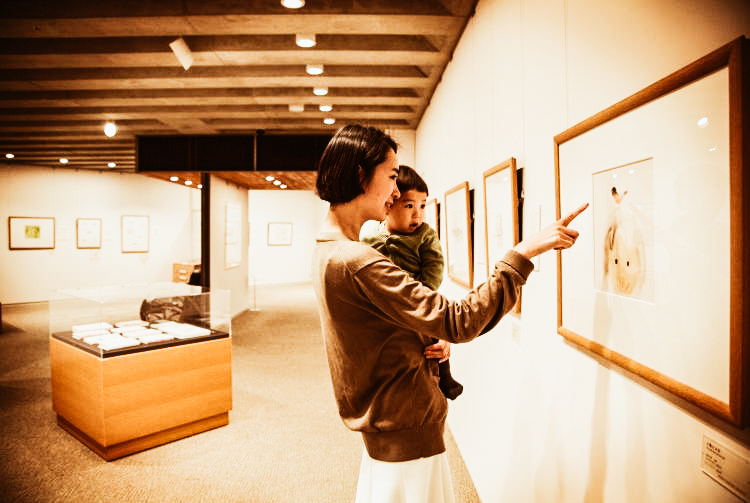
photo credits: gotokyo.org
The Chihiro Art Museum in Tokyo was established in 1977 in honor of the artist Chihiro Iwasaki (1918-1974), famous for his delicate pastel-colored illustration for children. Today this museum also houses exhibits with works by other illustrators from around the world.
Fukuoka Art Museum
Opened in 1979, the Fukuoka Art Museum offers a collection of 16,000 works: tea utensils, Buddhist art, paintings not only local but also famous paintings by Dalì, Mirò, and Chagall.
Fukuoka City Museum
Asian art takes on charm and originality that no other museum in the world will ever be able to offer. In fact, at the Fukuoka City Museum, we find works by artists who "exceed" the standard to create a "contemporary" Asia.
The Keio University Library museum
The Keio university has always been one of Japan's most important and its library includes collections of inestimable value, such as the Gutenberg Bible, ukiyo-e, and over 10,000 rare editions consisting of manuscripts and letters written by leading figures in history.
Kyoto National Museum
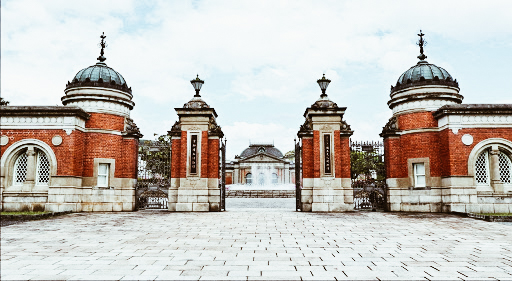
photo credits: intk-token.it
The Kyoto National Museum was opened in 1897 with the name of the Kyoto Imperial Museum. In 2014, the museum opened a new wing, the Heisei Chishinkan, to host exhibits from its vast collections, which include over 12,500 traditional Japanese works of art.
Tokyo National Museum
The Tokyo National Museum exhibits a large collection of works of art and antiques from Japan, from ancient ceramics to prints of the Edo period and works from other Asian countries.
The Kyoto Costume Institute
Japanese fashion has always influenced the world and the Kyoto Costume Institute (KCI) systematically collects and conserves exceptional examples of Western clothing through centuries.
Nagasaki Atomic Bomb Museum
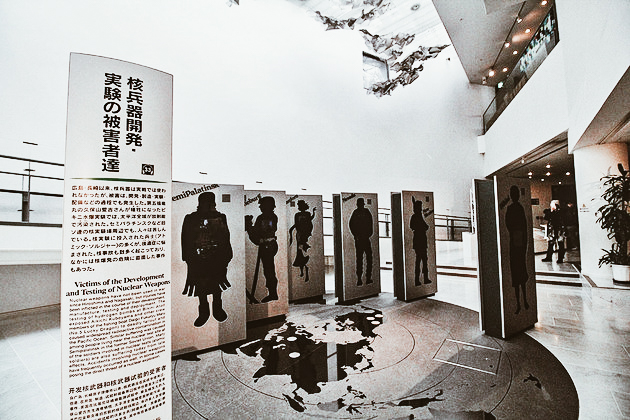
photo credits: shoreexcursions.asia
There is very little to tell for the Nagasaki Atomic Bomb Museum. It was born not to forget what happened on August 9, 1945, at 11:02 am when all the clocks stopped, visiting this place it's a tremendously moving experience.
The Museum of Oriental Ceramics, Osaka
Founded in November 1982, the Museum of Oriental Ceramics in Osaka includes about a thousand pieces of Chinese and Korean ceramics as well as works from the Rhee Byung-Chang collection and works signed by Hamada Shoji.
Sagawa Art Museum
Opened in March 1998, the Sagawa Art Museum offers the public the works of Japanese artists such as Ikuo Hirayama, Churyo Sato, and Raku Kichizaemon XV.
Museum of the Sakitama Ancient Burial Mounds
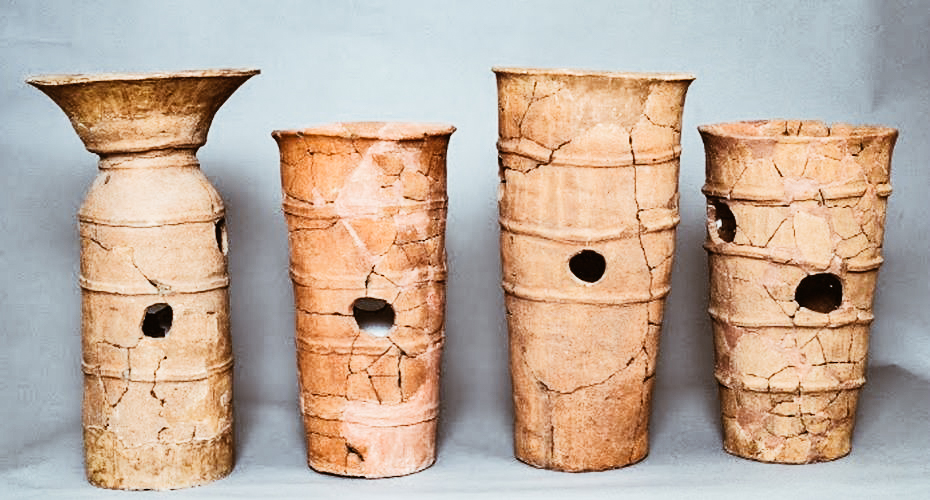
photo credits: smarthistory.org
In the Museum of Sakitama Ancient Burial Mounds we find a collection of artifacts, which later became national treasures. In fact, in the rooms of this museum, we see extremely valuable resources that will let you understand the ancient history of Japan.
If you think it is still not enough and you feel the desire to walk virtually through the cities of Japan, today it is possible! In fact, visiting the buildings and streets of the Rising Sun becomes easy thanks to Google Street View. Here millions of absolutely breathtaking panoramic images that will make you dream and transport you beyond any geographical border!
A hotel with cats? It just opened in Japan!
The Neko Hotel opens in Osaka
written by: Erika | Source: SoraNews24
Although we are all still stuck home, nobody forbids us to travel with the mind, so here is a brand new hotel where you can vacation with cats, the Neko Hotel in Osaka!
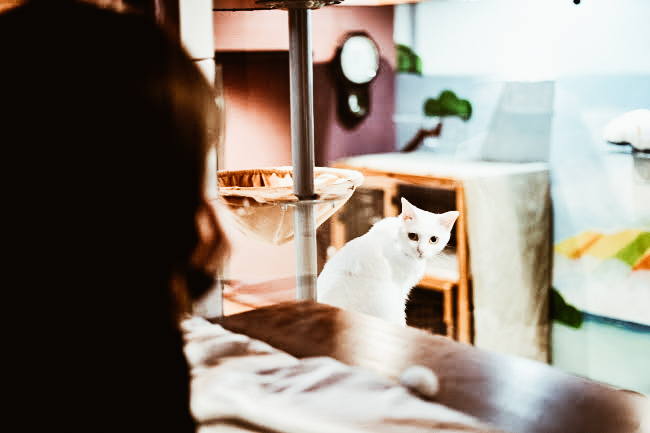
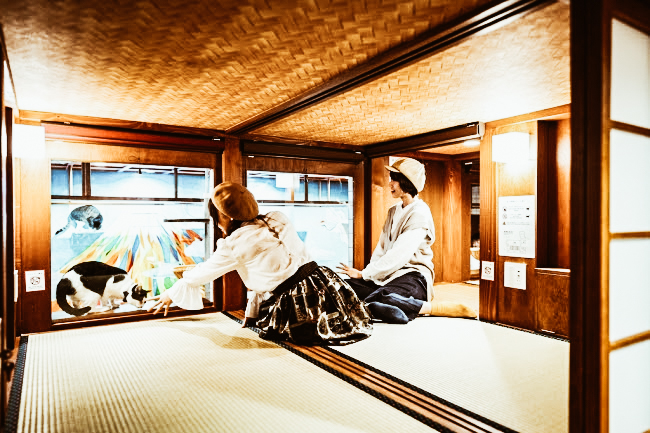
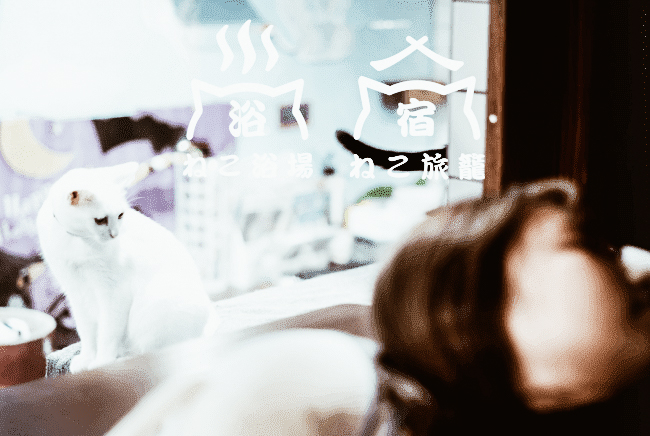
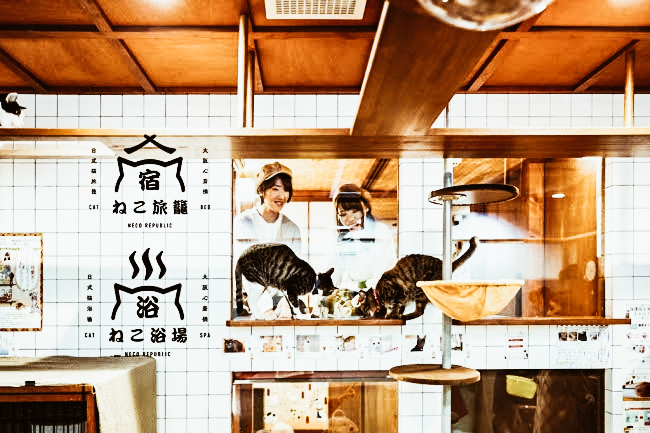
Forget about the sea view, now the "cat view" is what matters. As many of you know, in Japan there are the famous capsule hotels, very small rooms in excellent but low-priced locations. They call them capsule hotels because they are only a place to sleep with a shared bathroom/shower and nothing else. However, since last December, there is a brand new capsule hotel that offers extra comfort: cats!
Neko Yokujo & Neko Hatago, this is the name of the space that houses a small cafe and a neko hotel in Osaka. The buildings are divided in two parts with the cat cafe on one side and the hotel on the other. The floors are structured so that the area where the cats play is directly adjacent to the back of the guests' sleeping area. However, instead of having a solid wall that closes the view, the back of the night compartment is actually made of glass. In this way, a window is created that gives all the people who stay in this hotel a beautiful view of the cats.
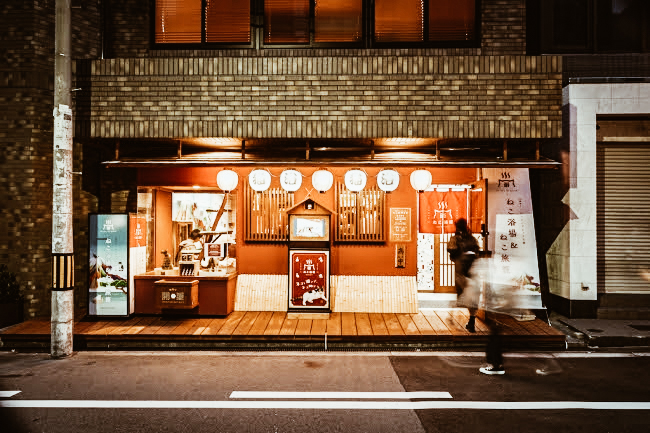
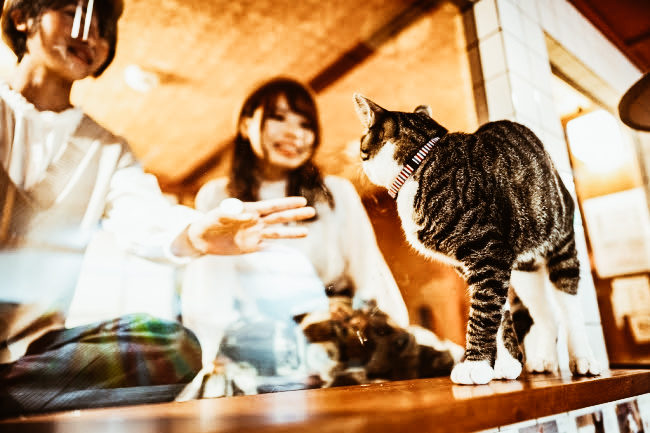

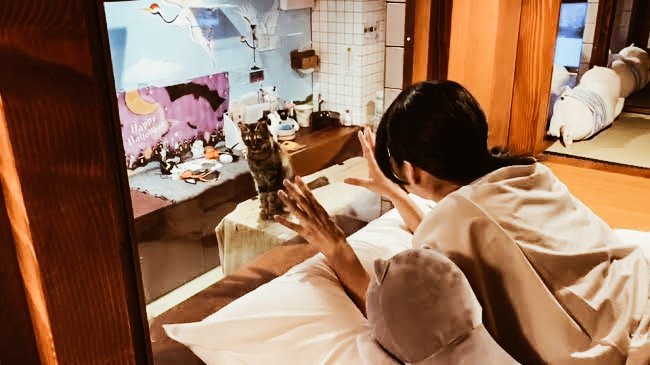
If you are wondering about your privacy, don't worry because each guest will be able to use curtains to isolate themselves if they wish to. In addition, the windows are placed so that one cannot look into the adjacent capsules. This way, you can keep the curtains open overnight, even after the cafe closes, so that you can observe the night adventures of the cats. In addition, the staff of the structure also offers special toys that can be controlled via radio in order to play with the cats beyond the glass.
Obviously, being able to observe cats only from a distance could become quite poignant. For this reason, the neko hotel offers all its guests a package that includes a two-hour voucher for the cat cafe worth ¥ 3000 with the possibility of accessing the cafe even before and after opening hours.
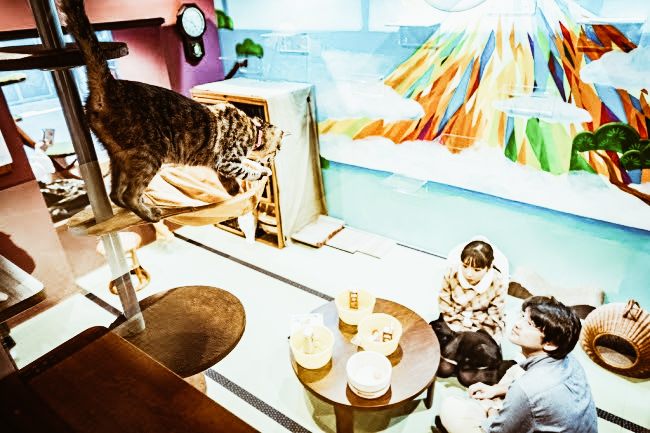
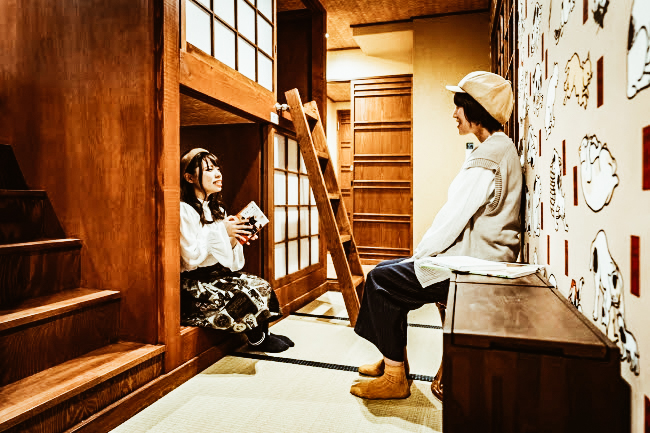
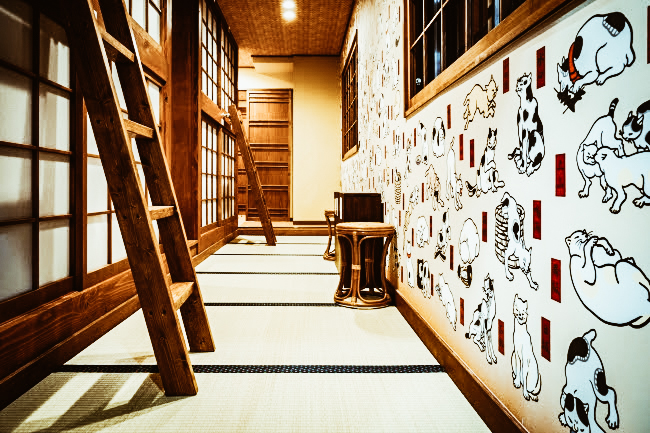
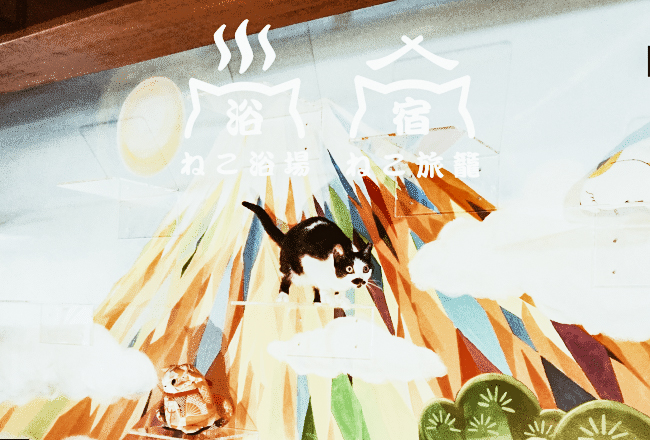
The design of the neko hotel is in typical Japanese style and obviously cats are a recurring theme. However, for anyone who falls in love with these feline friends easily, it may be difficult to say goodbye after just a few nights. In this case, don't worry, the Neko Hatago hotel is managed by the animal welfare company Neco Republic. In fact, all the cats you find in this hotel are felines saved from the street and always looking for a new home. Both the café and the hotel encourage guests to consider the stay as a test period to see if their personality fits well with that of one of the cats, in the hope of encouraging their adoption.
Don't you find it a beautiful idea? It would be great to be able to replicate it also in other parts of the world and we would love to hear your comments about it!
Information
Neko Yokujo & Neko Hatago / 猫浴場&猫旅籠
Address: Osaka-shi, Chuo-ku, Shimanouchi 1-14-29
大阪市中央区島之内1丁目14
Official Website | Facebook | Instagram
Travel guide: Tokyo - Episode 06 - the Shinkansen of the future
Tokyo – Osaka in one hour with the Shinkansen of the future
written by: Sara | translation: Erika | source: TimeOut Tokyo
We continue with our practical guides about Tokyo and today we talk about the Japanese railway system, one of the most efficient in the world, and the jewel of this system: the shinkansen.
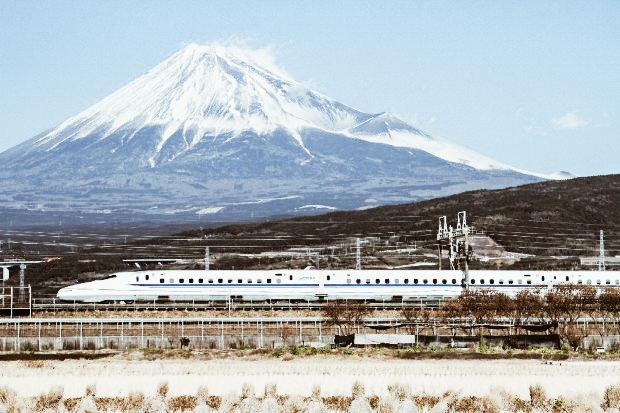
photo credits: repubblica.it
An integral and characteristic part of Japanese infrastructure, the shinkansen (新幹線) are the famous “bullet trains”. They travel very fast up to 320 km / h, to take us from one city to another in no time.
The Shinkansen lines
Currently, there are 15 known lines that allow us to travel to different destinations in Japan. From Tokyo towards the south we have the Tokaido Shinkansen line, which connects the capital with Osaka. The Sanyo Shinkansen line connects Osaka to Fukuoka, while the Kyushu Shinkansen line from Fukuoka crosses the island of Kyushu from north to south. Shinkansen Akita, Hokkaido, Hokuriku, Joetsu, Tohoku and Yamagata also depart from Tokyo.
The challenge of the Rising Sun is always constant: to offer safety and maximum efficiency.
In 2015, Japan Railways Group (JR) managed to break the world speed rail record with the magnetic levitation train that reached 603 km/h. From here, the company developed a program to maintain this impressive record, something we could define futuristic. We are talking about the Tokyo-Nagoya-Osaka section. This new initiative is called the Linear Project and is expected to be completed in 2037.
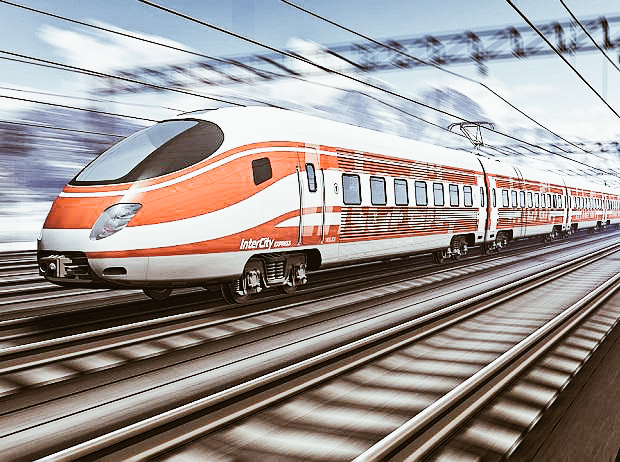
photo credits: business-standard.com
The trains of the future
Japan Railways has always been committed to implementing ultra-modern trains. In fact, the company is now focusing on building a linear Shinkansen capable of traveling with magnetic levitation. This type of technology would have retractable wheels that do not touch the tracks making the train elegantly “slide” without any friction. This futuristic shinkansen would travel at a top speed of 500 km/h, taking us from Tokyo to Nagoya in 40 minutes and from Tokyo to Osaka in 67 minutes.

photo credits: agatetravel.com
Obviously, this project requires a new infrastructure that allows a connection from Tokyo to Nagoya situated for the most part underground. In fact, this would avoid areas prone to strong earthquake shocks. With costs that would be around 50 and a half billion, the first part of the route could already be completed in 2027. So, we just have to wait and follow developments.
What do you think of traveling at high speed? These futuristic trains are now part of our reality and the shinkansen has an incredible charm: have you had the opportunity to try it? Tell us about your experiences!
Travel guide: Tokyo - Episode 05 - Rent in Tokyo
Cheapest Apartment rent in Tokyo
written by: Sara | translation: Erika | source: Soranews24
We continue with our practical guides about Tokyo with a focus on the cheapest apartments ret that can be found in the city.
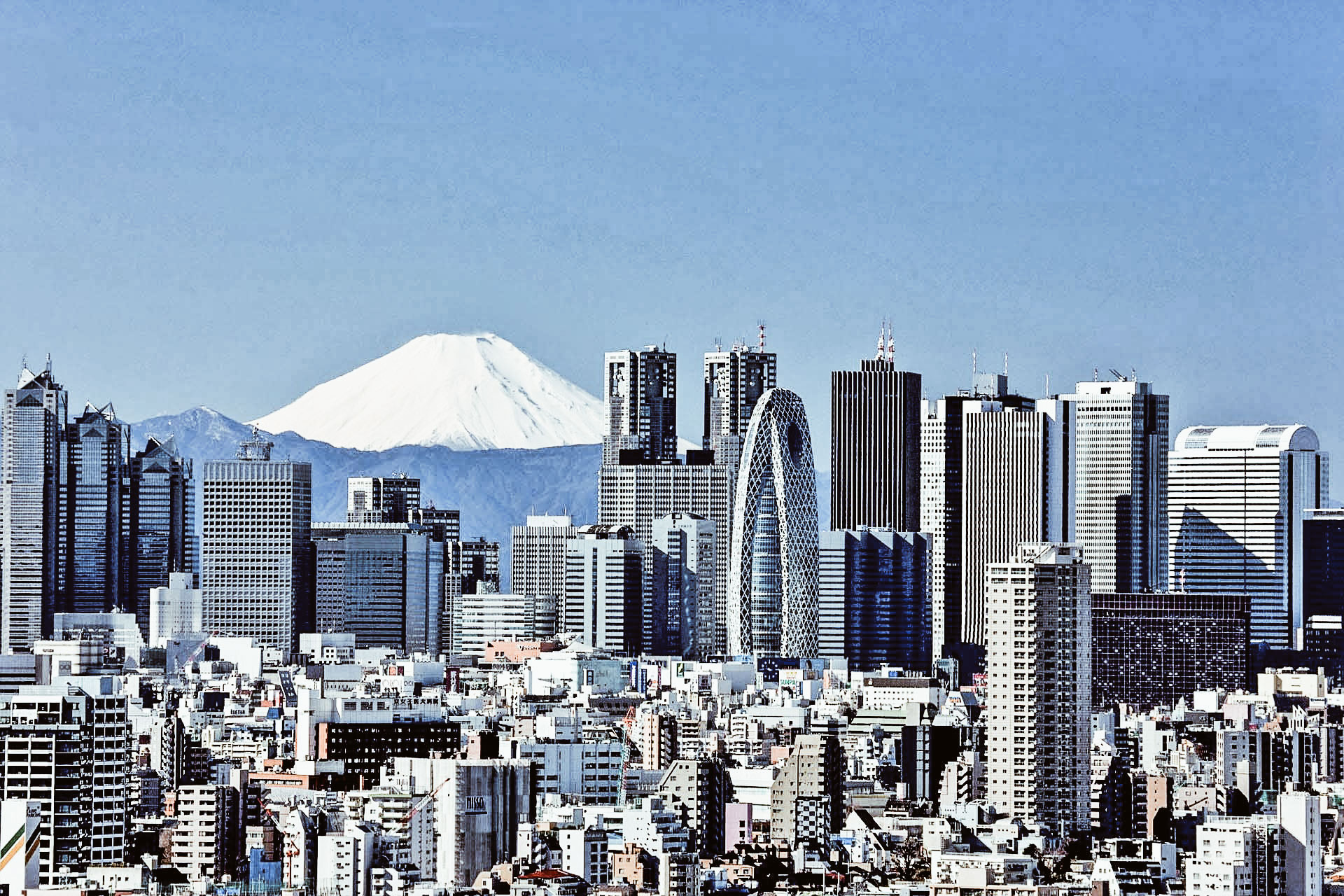
photo credits: tgcom24
How many times did we think “What if I went abroad to look for new opportunities?” and at the same time the fear of the prohibitive prices of the apartments kept us from realizing this intention?
Today pursuing this dream is possible! If you are thinking of Tokyo as a destination, you should know that there is nothing prohibitive. Small apartments at affordable monthly prices will allow you to start a new life in this wonderful megalopolis.

photo credits: facebook.com/suumo.jp
The Japanese real estate agency Suumo has published the result of a study demonstrating the convenience of rental rates of the great cities of the Rising Sun. Of course, the apartments taken into consideration are one-bedroom apartments between 10 and 40 square meters and are not located in the city center. In fact, as we know, in this area we find offices, commercial activities together with the most luxurious multi-story residences. However, thanks to the proximity to the stations or subways that allow you to move easily and reach any destination, also the external areas become important options to consider!
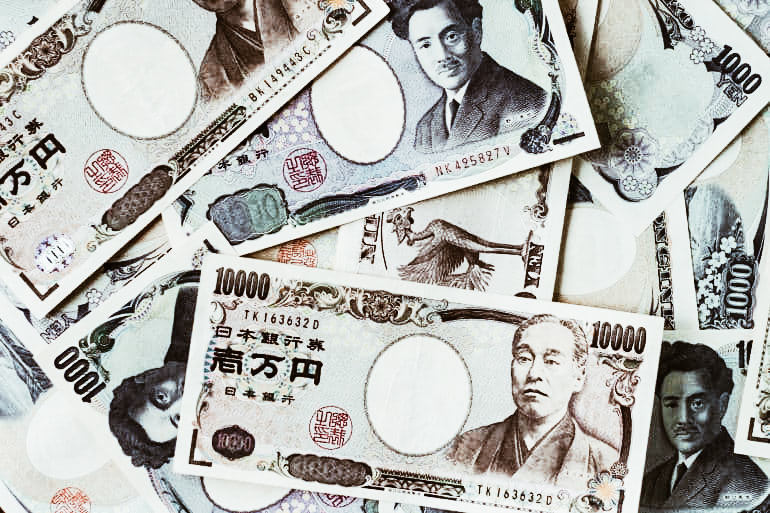
photo credits: Japanexperterna.se
The most convenient residential areas in Tokyo
The result of Suumo’s research was the following:
59,000 yen per month near Kasai Rinkai Koen Station (JR Keiyo Line). Akihabara, Tsukiji, Ginza or Roppongi can be reached in just 14 minutes by train from Tokyo station and with a one-way transfer to the Hibiya subway line.
60,000 yen per month near Kanamachi Station (JR Joban Line), from which you can reach Ueno and Keisei Kanamachi (Keisei Kanamachi Line).
62,000 yen per month near Kita Ayase Station (Tokyo Metro Chiyoda Line), which leads to Harajuku and Shinozaki Station (Toei Subway Shinjuku Line), which, as the name suggests, catapults us directly to Shinjuku.
63,000 yen per month near Funabori Station (Toei Subway Shinjuku Line), Horikiri Shobuen Station (Keisei Main Line), Ichinoe Station (Toei Subway Shinjuku Line), Keisei Tateishi Station (Keisei Oshiage Line), Shibamata Station (Keisei Kanamachi Line) and Takenotsuka Station (Tobu Isesaki Line / Tobu Skytree Line).
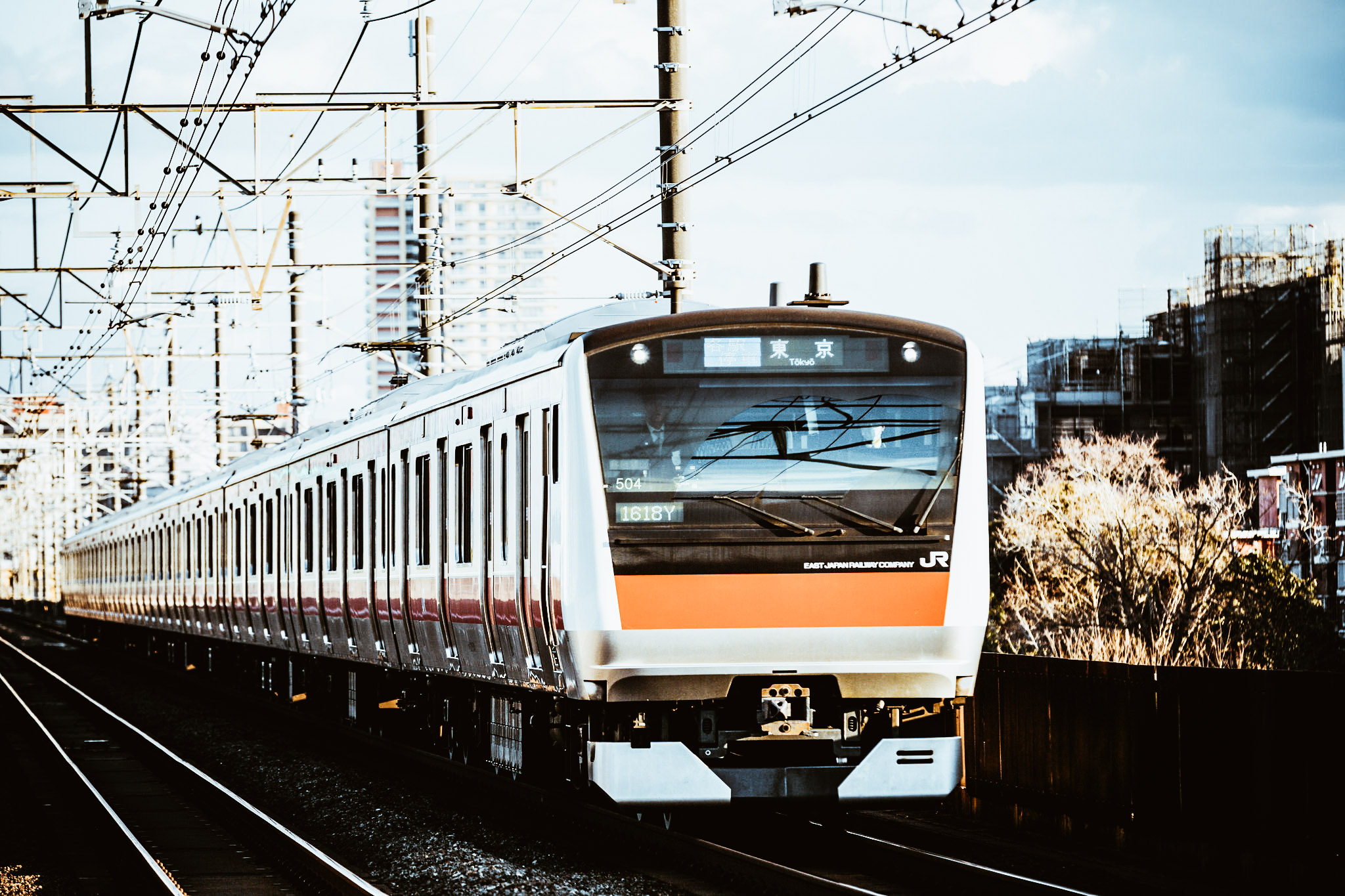
photo credits: hansjohnson
Don’t you feel heartened? That feeling of being able to say, “then can I make my dream come true if I want?”. There is really nothing unattainable if we can seize the right opportunity.
Quaran, the official quarantine mascot of Japan
Quaran, the official quarantine mascot of Japan
written by: SaiKaiAngel | Source: TimeOut Tokyo
Meet Quaran, the official Japanese quarantine mascot! That's right, once again Japan has decided to give us an important message while maintaining a smile.
The whole world is going through a very difficult time, fighting against the Covid-19 pandemic. Right now, wherever companies, museums, schools, and even entire cities are closing, pushing people to take action with smart-working. All this will last until the end of this emergency.

And here comes Quaran, a mascot created by the Japanese Ministry of Health to make people understand the importance of staying at home and also remembering the safety distances. It is described as a small fairy with a Q on the forehead, a shield, and protective glasses. Take a look also at his back: with the Q shaped tail, the Q of Quaran, the Q of Quarantine. The description, as we said, speaks of a small fairy that reminds us how to avoid the virus by respecting the distances and avoid gatherings. However, when we meet it, we discover it's actually a life-size mascot! Where can this puppet be found most? At airports in Japan, but it is said to travel around the world to prevent illegal attitudes that could spread the Covid-19 virus, even more, protect us with its shield and common sense.
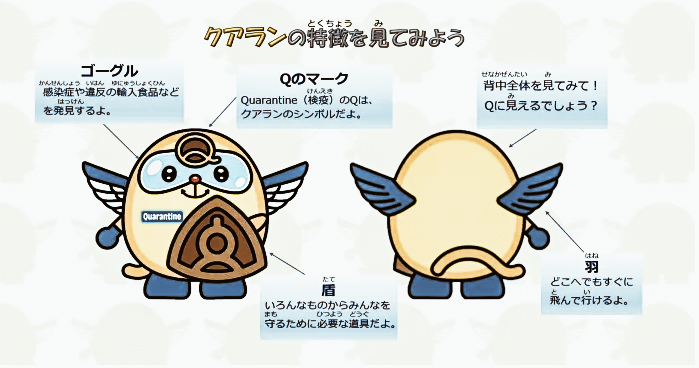
Quaran was also created to promote the work of the Quarantine Information Office, under the control of the Ministry of Health.
Not just this! Quaran even has it's own website, it deserves one very careful look. Stay safe, world! Quaran will help us live everything with responsibility, common sense, prevention, but always with a smile. A smile, we must never lose during this fight.
Source: TimeOut Tokyo | Photo credits: forth.go.jp
Atsuta Matsuri, lanterns and fireworks
There are many Japanese matsuri but today we decide to focus on Atsuta Matsuri, in the prefecture of Aichi.
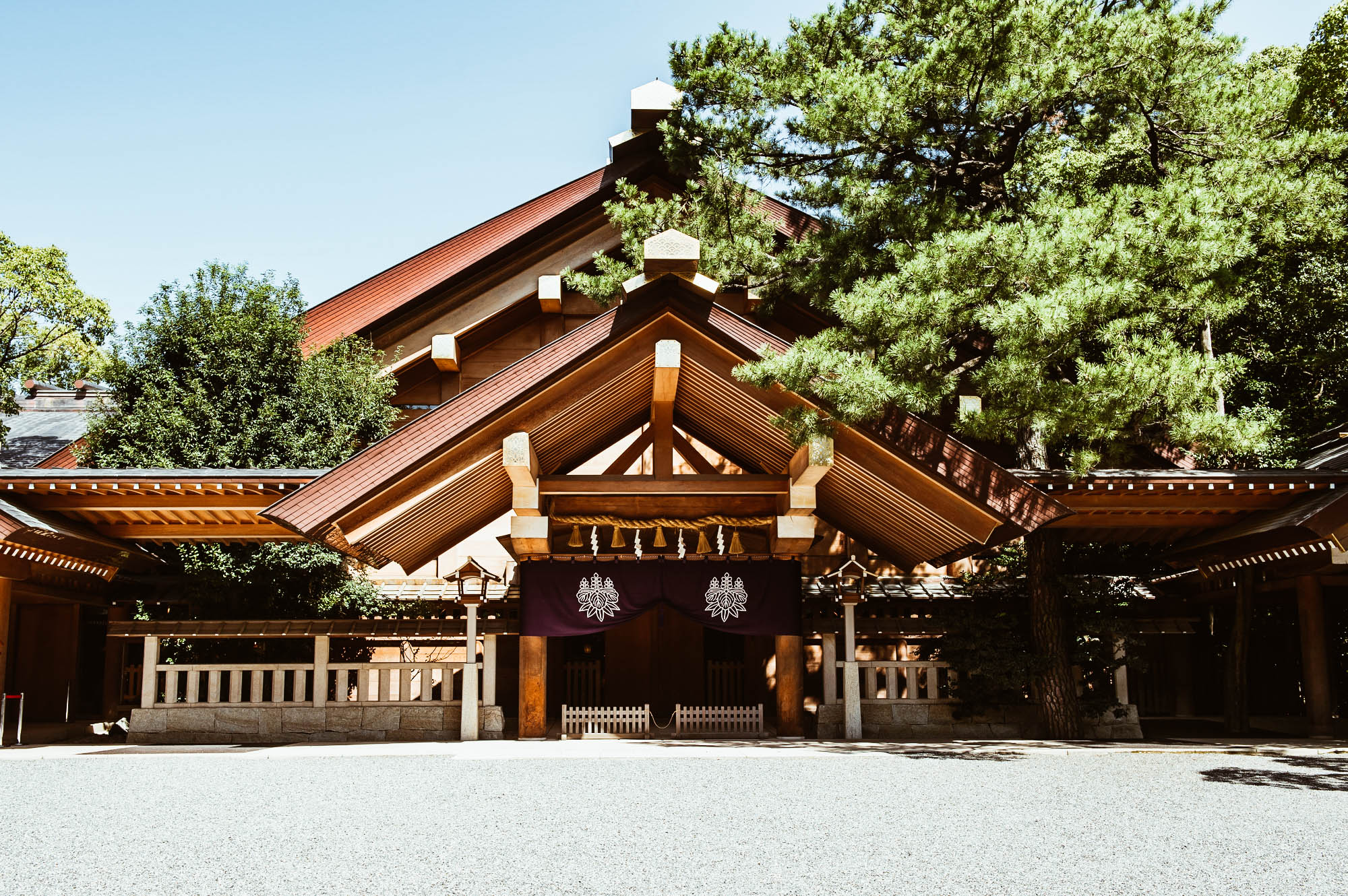
photo credits: thegate12.com
In the Chubu region, more precisely in Nagoya in the Aichi prefecture, if we enter the city, hidden among centuries-old cypresses, we will discover one of the most sacred shrines in Japan: the Atsuta Jingu. Venerated since antiquity with its 1900 years, it is believed to be the home of the Holy Kusanagi Sword of the Emperor, one of the three imperial insignia.
In this magical place, Atsuta Matsuri (諸ブー祭), better known as Shobu-sai, is held every year on June 5th.
Atsuta Matsuri day
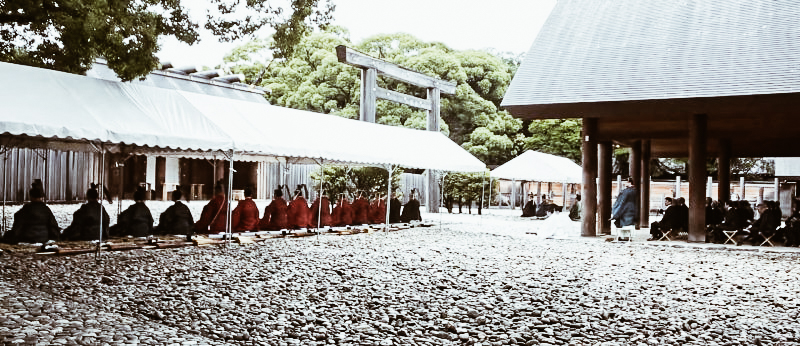
photo credits: kawaii-aichi.jp
Around 10:00 in the morning the celebrations begin with a special ceremony in which an imperial messenger is sent to the shrine to offer goheimotsu. These are in fact strips of white paper for Shinto rituals and which are used to celebrate a special ceremony dedicated to the gods and goddesses of Atsuta Jingu. After that, this splendid and characteristic Matsuri hosts various shows between the precincts of the Shrine.
The shows
The shows during this festival are many and varied, including kyudo, Japanese-style archery and kendo, Japanese fencing. But the real protagonist is the Atsuta-kagura, a type of traditional local Shinto dance accompanied by flutes and taiko, the typical Japanese drums. In addition to this, we find various performances including the Sumo and entertainment competitions such as the Kodomo Mikoshi, the portable shrines for children!


photo credits: kawaii-aichi.jp, goinjapanesque.com
The Festival reaches its climax when, at 18:00, the five makiwara kento, huge allegorical altars decorated with 365 lanterns each, are placed next to the entrances of the three torii doors of the sanctuary and are illuminated. Of course, there are stalls offering typical products and souvenirs of all kinds.
The chatter of people stops at 21:00 in the Jingu Koen park when a wonderful fireworks display raises heads and fills the eyes with lights and colors.


photo credits: goinjapanesque.com
The Atsuta Festival is the largest festival among the approximately 70 events held at the Atsuta Shrine every year.
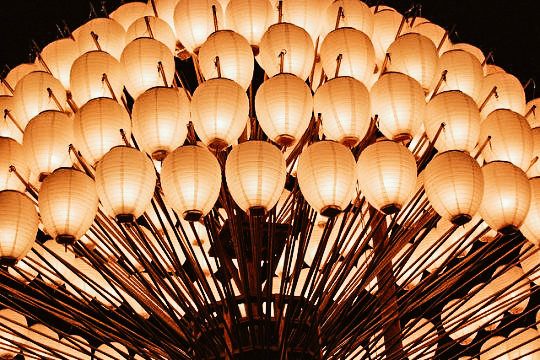

photo credits: nagmag.jp, kichijapan.com
If you are in the surrounding area, don't miss these magical lanterns and fireworks show to spend a fun day in the name of tradition! Like any festival, participation is free. For any information on how to reach the location, visit the official site of the Shrine in English.
Travel guide: Tokyo - Episode 04 - Breakfast in Tokyo
Breakfast is the most important meal of the day and this rule also applies to Tokyo! Today for the new post dedicated to our practical guides we will talk about the best places to have breakfast in Tokyo.

photo credits: oyakata.com.pl
The typical breakfast in Tokyo and Japan
When it comes to "breakfast", each of us has different ideas according to their habits: sweet, savory, protein.
I'm accustomed to fresh fruit and oat smoothies every morning, and I recently said to myself: "If I lived in Tokyo and wanted to try Japanese traditions, what could I eat for breakfast?"
Fortunately, even in Japan, breakfast has long been considered the most important meal of the day and is prepared and eaten at home. The traditional breakfast of the Rising Sun is based on the concept of ichiju-sansai (一汁三菜 = a soup, 3 dishes). The main dishes are Gohan (ご飯), a bowl of steamed rice, Shiru (汁) a bowl of soup, Okazu (おかず) the main dish and Kouno mono (香の物) a small dish of pickled seasonal vegetables.
Hatsufuji in Nihonbashi

photo credits: timeout.com
This is a place loved by everyone who goes to the office every morning. Hatsufuji in Nihonbash i is a restaurant where, through a simple machine, you can order a complete set of breakfast dishes between 7:00 and 11:00 in the morning.
Tsumugi in Tsukiji

photo credits: favy-jp.com
As part of the information center of the ancient Tsukiji Hongan Temple, Tsumuji offers a small shop and a spacious cafe with a warm and relaxing atmosphere. The breakfast, served until 11, offers the possibility to choose between two menus. The first choice is the traditional set which includes grilled fish, sweet and sour vegetables, tamagoyaki, rice and miso soup, muesli with rice crackers and fresh fruit.
Alternatively, the spectacular 18 Hinmoku No Asagohan which includes 18 dishes! Inspired by the teachings of the 48 great vows of Amitabha Buddha, it includes rice porridge, miso soup and 16 small seasonal dishes, such as duck with sansho pepper, konnyaku shiroae, tamagoyaki, tofu with white bean paste, yuzu and matcha jelly.
Tsukiji Sushi Sei in Marunouchi
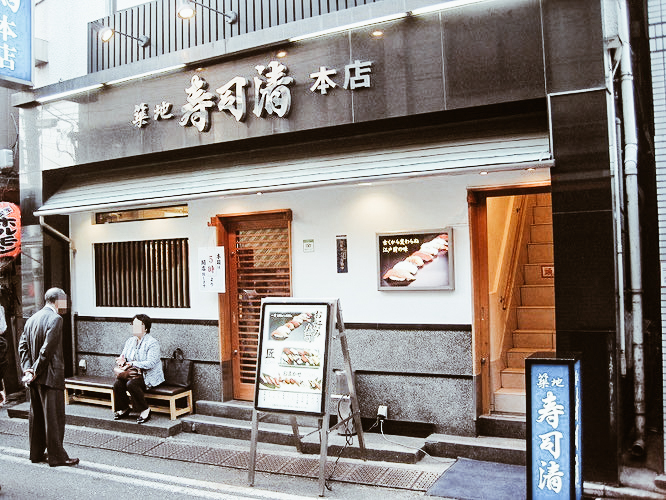
photo credits: picrumb.com
Walking through Tokyo station, in the GranSta Dining sector, you come across the Tsukiji Sushi Sei. Here breakfast, served from 7 to 10, includes a special dish. We are talking about tai goma (red snapper sliced with sesame) and many other variations such as braised fish with salmon bacon and ikura. Each portion is rigorously accompanied by a bowl of rice, miso soup, tamagoyaki and sweet and sour vegetables.
Shinpachi Shokudo in Shinjuku
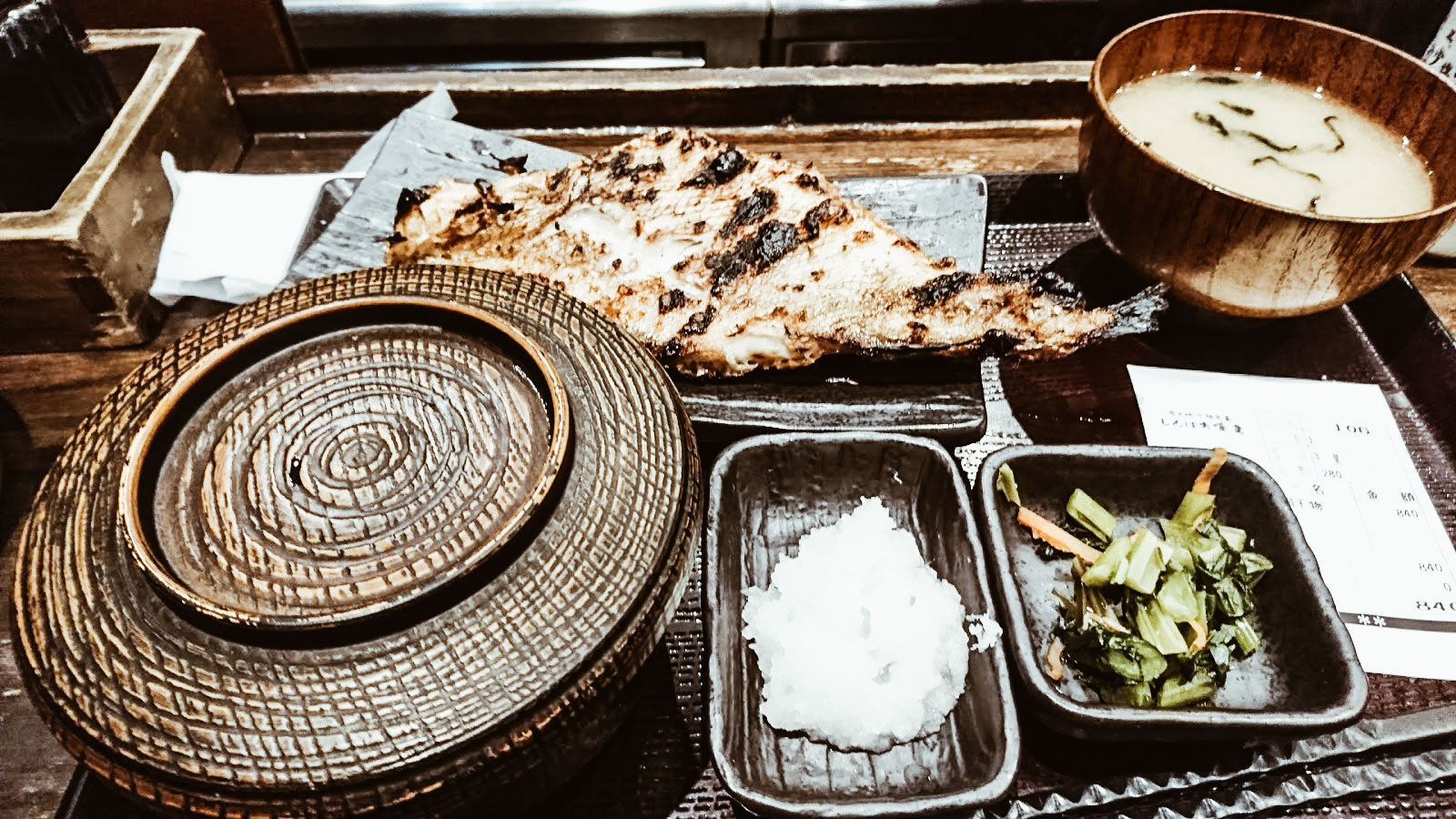
photo credits: tripifyapp.com
The morning frenzy of the Japanese can be experienced in this particular place located between the back streets of Shinjuku. Inspired by a rustic farm, the horseshoe-shaped counter guarantees fast service and tasty food. Here breakfast includes mackerel, grilled saikyo, marinated salmon and goma-aji.
Odashi Tokyo in Shinagawa
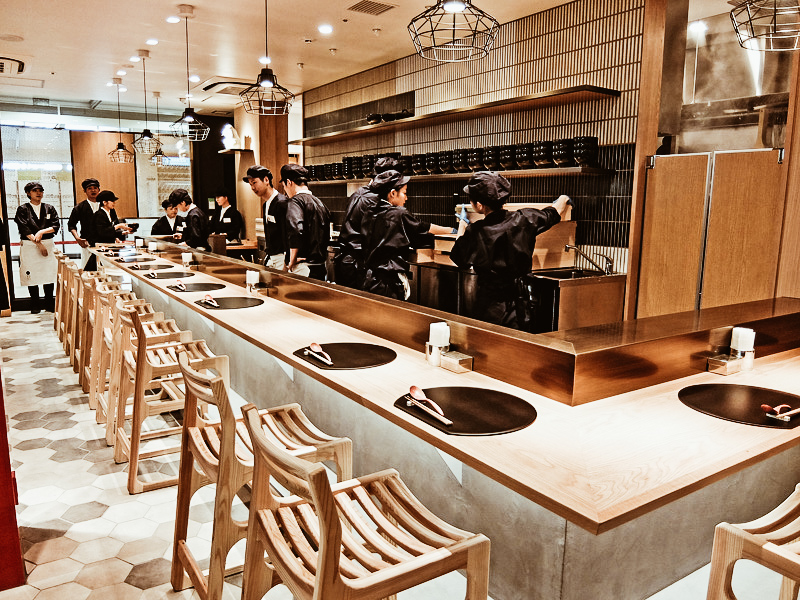
photo credits: ryutsuu.biz
Odashi belongs to a chain and as such offers a set menu and small ones extra additions that can be chosen from various offers. Breakfast, served between 7 and 10, includes lobster miso soup, pork and spinach in ginger soy milk broth, chicken congee, lotus root and Chinese pumpkin congee. These are all dishes to which you can add tofu, broth with pork and potatoes and saikyo miso soup.
Which of these local traditions intrigued you? Have you already found your favorite or do you know other fantastic niches to suggest? One thing is certain: breakfast in Tokyo is also an extraordinary experience!








